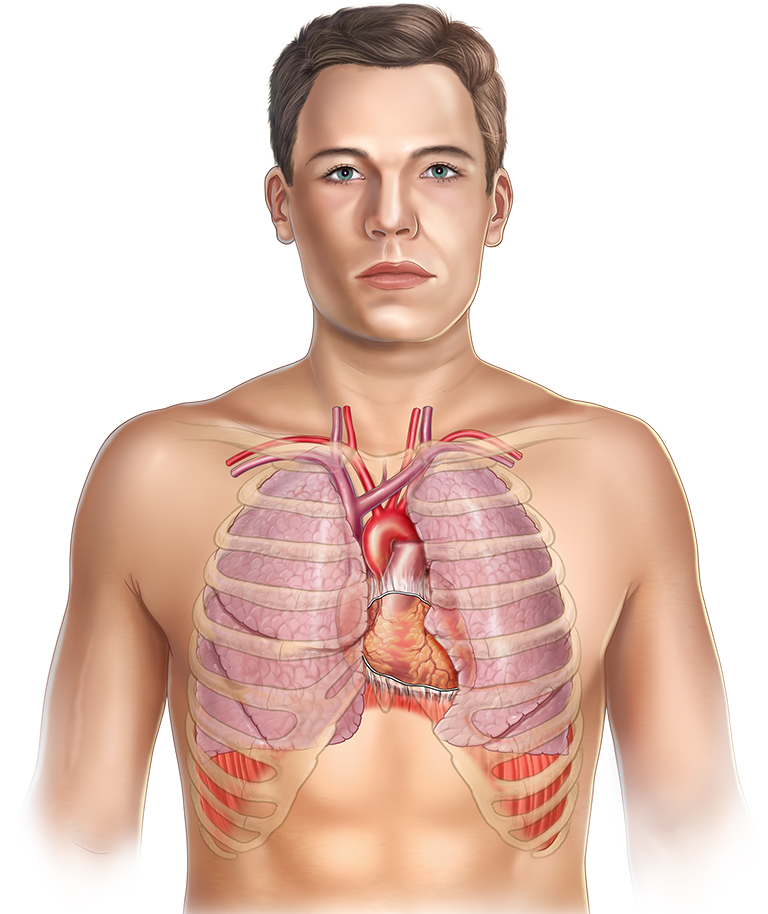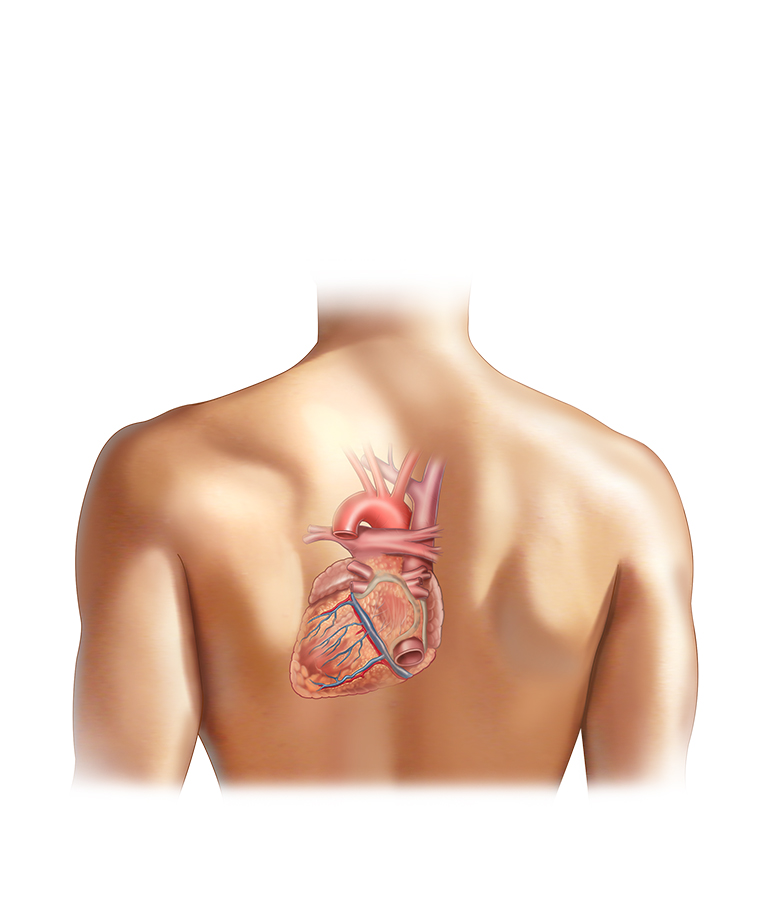1.0 Heart anatomy
The heart is a muscle. It is classified as a separate tissue under the muscle tissue category. This is because the heart muscle has distinctive features compared to skeletal muscle and smooth muscle, both histologically and physiologically.
Learning outcomes:
After studying the heart anatomy, you should be able to:
- describe the location of the heart within the thorax
- describe the organization and function of the pericardium
- describe the structure of the heart wall
- account for the structures of the cardiac chambers and the functional characteristics of these
- explain the function of foramen ovale
- account for the cardiac valves including names, location and functionaccount for the blood transport through the heart, including Latin names of connecting arteries and veins
- describe the location and function of the coronary blood vessels
The heart weighs between 250 to 350 grams and is approximately the size of a clenched fist. The heart is located in the thorax, partially protected behind the sternum. The heart’s tip (apex), faces the left of the thorax, which is probably the reason why the heart’s location is often described as lying on the left side of the chest. Within the thorax the heart is located in a separate cavity, the pericardium.








